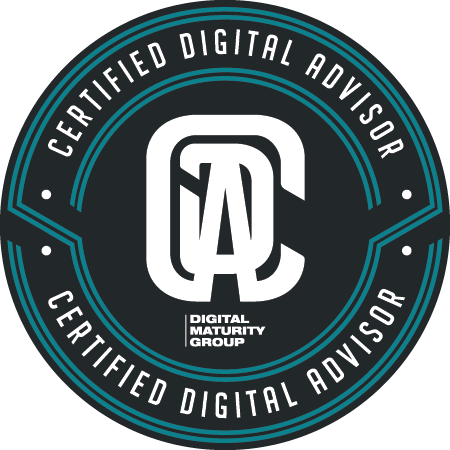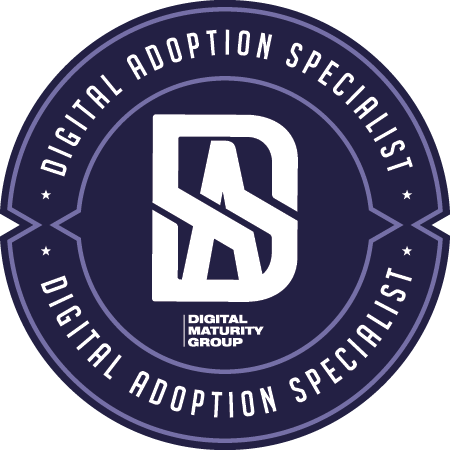In today’s rapidly evolving digital landscape, small businesses face numerous challenges when it comes to adopting and leveraging digital technologies. While larger corporations have the resources and expertise to navigate this digital transformation smoothly, small businesses often struggle to keep up with the pace of change. However, with the right strategies and support, Canadian small businesses can break down the barriers to digital adoption and unlock new opportunities for growth.
This article will explore the challenges faced by Canadian small businesses in embracing digital technologies and provide actionable insights to overcome these hurdles.
Understanding the Digital Adoption Gap
The digital adoption gap refers to the disparity between businesses that have successfully embraced digital technologies and those that have not. This gap is particularly pronounced among small businesses, as they often lack the necessary resources, knowledge, and infrastructure to undergo a seamless digital transformation.
Importance of Digital Adoption for Small Businesses
Digital adoption is crucial for small businesses in Canada to remain competitive in today’s market. It enables them to streamline operations, enhance customer experiences, access new markets, and drive innovation. By leveraging digital technologies, small businesses can level the playing field and compete with larger enterprises.
Key Challenges in Digital Adoption for Canadian Small Businesses
- Access to Affordable Technology Small businesses often face financial constraints when it comes to investing in the latest digital tools and technologies. The cost of hardware, software licenses, and ongoing maintenance can be prohibitive, making it challenging for them to adopt digital solutions.
- Digital Skills and Education A lack of digital skills and knowledge poses a significant hurdle for small businesses. Many entrepreneurs and employees may not have the necessary expertise to leverage digital technologies effectively. Without proper training and education, the adoption process becomes daunting.
- Cybersecurity Concerns Digital adoption introduces new cybersecurity risks for small businesses. The fear of data breaches, hacking, and other cyber threats often hinders their willingness to embrace digital technologies fully. Protecting sensitive information and ensuring a robust cybersecurity framework is essential.
- Resistance to Change Resistance to change is a common barrier to digital adoption. Small businesses may be comfortable with their existing processes and reluctant to disrupt established routines. Overcoming resistance requires effective change management strategies and clear communication.
- Limited Resources Small businesses typically operate with limited resources, including time, budget, and manpower. This scarcity makes it challenging to allocate resources for digital adoption initiatives. Finding ways to optimize resource allocation is crucial for successful digital transformation.
- Lack of Digital Strategy Many small businesses lack a comprehensive digital strategy to guide their adoption efforts. Without a clear roadmap, businesses may struggle to prioritize initiatives, invest in the right technologies, and align digital adoption with their overall business objectives.
Overcoming Barriers to Digital Adoption
- Access to Affordable Technology To overcome financial constraints, small businesses can explore cost-effective alternatives such as open-source software, cloud-based solutions, and subscription-based services. They can also consider leasing or financing options to spread the cost of technology investments.
- Digital Skills and Education Investing in digital skills training for employees is essential. Small businesses can partner with local colleges, universities, or training providers to offer workshops, courses, or online resources. Additionally, fostering a learning culture within the organization encourages continuous skill development.
- Cybersecurity Concerns Small businesses should prioritize cybersecurity by implementing robust security measures, such as firewalls, encryption, and regular data backups. Engaging with cybersecurity experts or outsourcing security services can provide added protection and peace of mind.
- Resistance to Change Addressing resistance to change requires effective communication and stakeholder engagement. Small businesses should communicate the benefits of digital adoption, involve employees in the decision-making process, and provide training and support throughout the transition.
- Limited Resources Small businesses can optimize resource allocation by prioritizing digital initiatives based on their potential impact. Conducting a cost-benefit analysis and leveraging partnerships with technology vendors or service providers can help maximize the value derived from limited resources.
- Lack of Digital Strategy: Developing a comprehensive digital strategy is essential for successful adoption. Small businesses should align their digital efforts with their overall business goals and objectives. A digital strategy should include a roadmap, defined milestones, performance metrics, and a mechanism for monitoring progress.
Strategies for Successful Digital Adoption
- Conduct a Digital Readiness Assessment: Assessing the organization’s digital readiness helps identify strengths, weaknesses, and areas for improvement. This assessment provides insights into the current state of digital adoption and helps prioritize actions.
- Invest in Digital Skills Training: Equipping employees with the necessary digital skills empowers them to leverage technology effectively. Investing in training programs and providing access to online resources helps bridge the digital skills gap.
- Foster a Culture of Innovation: Encourage a culture of innovation within the organization by promoting creativity, collaboration, and risk-taking. Creating an environment that embraces change and rewards experimentation fosters a mindset conducive to digital adoption.
- Embrace Cloud Computing and Software-as-a-Service (SaaS): Cloud computing and SaaS solutions offer scalable and cost-effective options for small businesses. These technologies provide flexibility, accessibility, and reduce the burden of managing infrastructure.
- Leverage Data Analytics for Informed Decision Making: Data analytics provides valuable insights into customer behavior, market trends, and operational efficiency. Small businesses can leverage data to make informed decisions, optimize processes, and personalize customer experiences.
- Collaborate with Digital Service Providers: Partnering with digital service providers can offer specialized expertise and support in areas such as website development, e-commerce, digital marketing, and cybersecurity. These collaborations enable small businesses to leverage external resources effectively.
- Develop a Comprehensive Digital Strategy: A well-defined digital strategy aligns digital initiatives with business goals. It outlines the steps, resources, and timelines required for successful digital adoption. Regularly reviewing and refining the strategy ensures its relevance and effectiveness.
Conclusion
Digital adoption is crucial for Canadian small businesses to thrive in today’s digital age. By overcoming the barriers discussed and implementing effective strategies, small businesses can unlock new opportunities, enhance competitiveness, and drive sustainable growth. Embracing digital technologies is no longer an option but a necessity for success in the modern business landscape.
FAQs (Frequently Asked Questions)
- How can small businesses overcome financial constraints in digital adoption? Small businesses can explore cost-effective alternatives, such as open-source software and cloud-based solutions. They can also consider leasing or financing options and prioritize technology investments based on their potential impact.
- What can small businesses do to address cybersecurity concerns during digital adoption? Small businesses should implement robust security measures, such as firewalls, encryption, and regular data backups. Engaging with cybersecurity experts or outsourcing security services can provide added protection.
- How can small businesses foster a culture of innovation to drive digital adoption? Promote creativity, collaboration, and risk-taking within the organization. Encourage employees to generate ideas, experiment with new technologies, and reward innovative thinking.
- How can small businesses optimize resource allocation for digital adoption initiatives? Prioritize digital initiatives based on their potential impact and conduct a cost-benefit analysis. Explore partnerships with technology vendors or service providers to maximize value from limited resources.
- Why is developing a comprehensive digital strategy important for small businesses? A digital strategy provides a roadmap, aligns digital efforts with business goals, and ensures effective resource allocation. It defines milestones, performance metrics, and facilitates monitoring and refinement of digital initiatives.
Book a Wingman Today for a Free Digital Adoption Plan Consultation
There is no doubt that technology is critical to your business today. Organizations need to adopt a digital-minded strategy to be able to thrive. But it’s essential that technology is deployed correctly. And more specifically, you shouldn’t start without a solid digital adoption plan in hand.
If you feel that your current technology infrastructure might be holding your organization back from reaching your goals and objectives, it may be time to invest in a digital adoption plan, like what Wingman can provide you. Contact us today and we can show you how to make your technology work harder and smarter for you by creating your own unique digital adoption plan.
PS: Secure your $15,000 Canada Digital Adoption Grant Today
Did you know you can get up to $15,000 grant towards your digital adoption plan…and an interest free loan up to $100,000 and a hiring subsidy to implement it? Ask us about the Canada Digital Adoption Plan and Boost Your Business Technology Grant. Wingman is an approved CDAP Digital Advisor partner of Canada’s Innovation, Science and Economic Development Canada. Only an approved CDAP Digital Advisor can help you access the CDAP grant to have your digital adoption plan get approved through the CDAP program.
Book a Wingman today to discuss how we can help.




